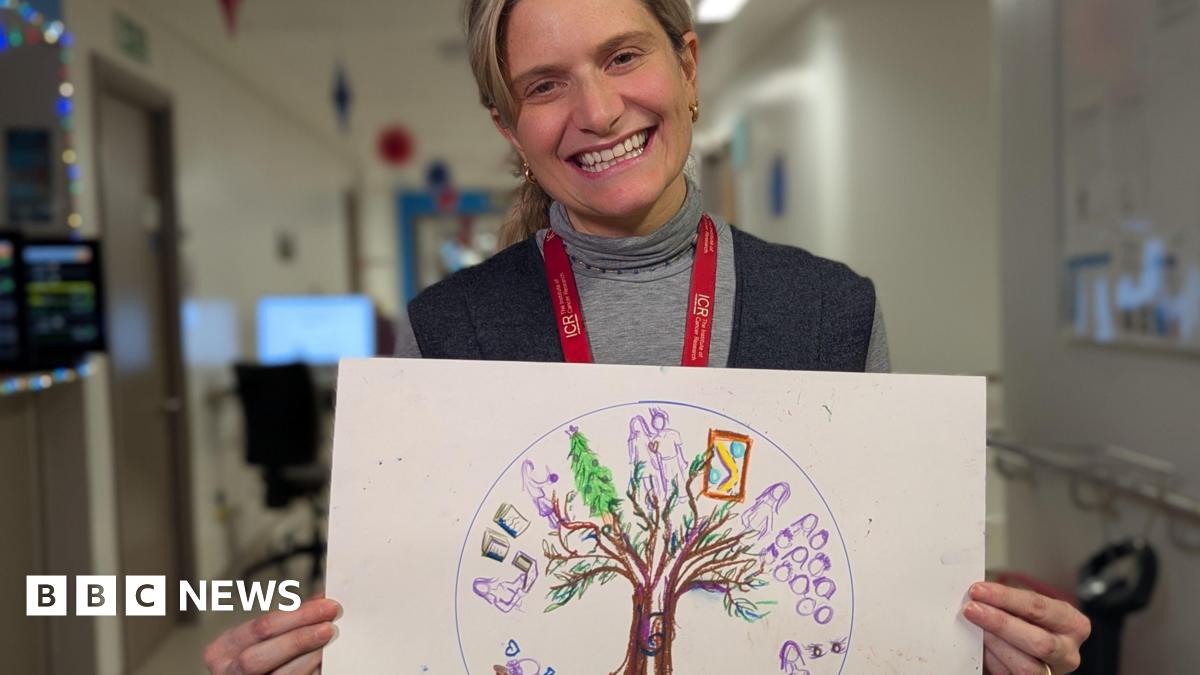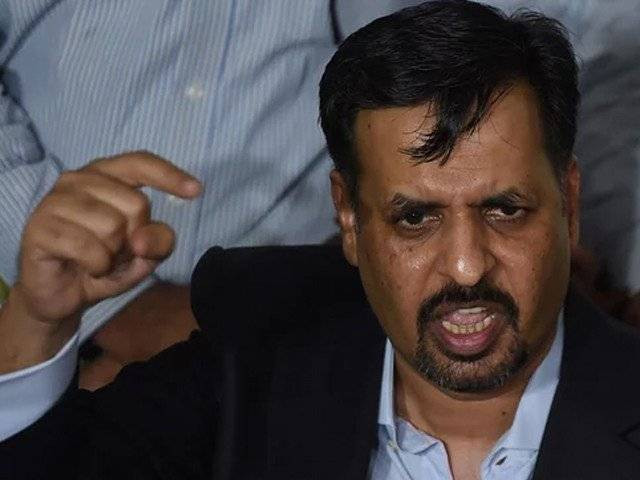So how does it make a difference to medical professionals?
Megan Tjasink, principal art psychotherapist at Barts Health NHS Trust, who was behind the study, explained: “While they’re very good at solving problems in a rational way, they can be…

So how does it make a difference to medical professionals?
Megan Tjasink, principal art psychotherapist at Barts Health NHS Trust, who was behind the study, explained: “While they’re very good at solving problems in a rational way, they can be…

Federal minister alleges party founder ordered murder while intoxicated; case still haunts MQM politics
Mustafa Kamal says Indian spy agency has been spending money to destroy Karachi for last 22 years. PHOTO: AFP

The Directorate of Public Works in Karak Governorate announced on Sunday the temporary closure of the Karak-Tafileh road due to falling rocks and mudslides, in addition to dense fog that has reduced horizontal…
Only two days after Tu-95 strategic bombers took off from Olenya, Kola Peninsula, as part of a massive terror…

The former chief executive of Wessex Water received a £170,000 bonus from its parent company last year despite a ban on performance-related pay after criminal pollution failures on his watch.
Colin Skellett received a total of £693,000 in pay from the water company’s Malaysian-owned parent company, YTL Utilities (UK), including the bonus, according to its accounts up to June 2025.
The bonus prompted strong criticism from the Liberal Democrats, which said it showed that the government’s bonus ban was “nowhere near strong enough”.
Wessex was banned from paying bonuses for the year after it was criminally convicted in November 2024 for a sewage pumping station failure six years earlier, which killed more than 2,000 fish and resulted in the company paying a fine of £500,000. In June the government banned bonuses covering the 2024-25 financial year for the chief executives and finance bosses of Wessex and five other companies. Wessex received another £11m fine last month over more sewage failures.
However, the water industry regulator, Ofwat, said that Skellett was able to retain the bonus under the law, because it was related to a different part of the parent company’s business. YTL is developing housing, offices and an arena in an area north of Bristol known as Brabazon.
A spokesperson for Wessex and YTL said that the bonus “entirely relates to his new role and was entirely funded by YTL. In his new role Colin is responsible for YTL UK group businesses including the development of Brabazon New Town”.
The large pay packets for water company bosses have become controversial in recent years amid widespread outrage over sewage leaking into Britain’s rivers and seas.
Wessex Water paid Skellett £157,000 for three months’ work from July to September 2024, when he stepped down as chief executive after 36 years in charge. However, Skellett stayed on as chief executive of the parent company, and continues to draw a large salary.
Despite Wessex Water describing his YTL job as a “new role”, Skellett has been a director of YTL Utilities (UK) since May 2002. In the last decade alone he has received £8.4m in pay for that job – including £3.4m in bonuses, according to the accounts for the business, which is the highest UK-registered company in the corporate structure. That is double the £4.2m he received in the same decade for his apparently separate but much more prominent job running Wessex Water Services – putting his total pay at £12.6m over 10 years.
MPs and Ofwat have already raised questions over the lack of transparency over payments to water bosses from other group companies. The Guardian in August revealed that the boss of Yorkshire Water, Nicola Shaw, had received £1.3m in undisclosed extra pay via an offshore company. Shaw was also allowed to keep the pay, after Ofwat determined it was not a performance-related bonus.
Earlier this month Shaw told the BBC that it had been a “mistake” for Yorkshire Water to hide the payments, although she would not commit to refusing the extra pay in the future.
“I do understand that we need to be transparent because people need to trust us. We’re providing the water and taking away the wastewater for them in Yorkshire and they need to trust us,” she said.
The Guardian’s reporting prompted Ofwat to consult on changes to force water companies to reveal pay from other companies in the same group from next year.
Anna Sabine, the Liberal Democrat MP for Frome and East Somerset, said: “For far too long, water company fat cats have been taking huge bonuses for pouring filthy sewage into our rivers.
“It is absolutely disgusting that the chief executive receive any kind of bonus after Wessex Water’s reckless and blatant disregard for nature, and even more disgusting that Ofwat allowed them to accept it on a technicality. The government needs to get far tougher with these water companies to end the sewage scandal, and put a full stop to bonuses until they do.”
A YTL spokesperson denied that the bonus was a “technicality”, saying it related to the nine months after Skellett stepped down from Wessex Water.
Ofwat itself is due to be abolished and replaced with a new regulator, with a government white paper setting out its new plans for the water expected in January.
Wessex Water was bought in 2002 by Malaysian group YTL, which was founded by the late billionaire businessman Yeoh Tion Lay. YTL, which is ultimately controlled by a company based in Jersey, bought Wessex Water from Enron, a US energy trading firm that collapsed because of an enormous fraud. Skellett stayed on as chief executive until last year.
YTL Utilities (UK) describes Wessex Water as its “principal subsidiary”. The vast majority of its £1bn revenues in the year to June came from water-related business. That included £653m from Wessex Water, and £240m from Water2Business, a joint venture with South West Water owner Pennon Group. However, YTL Utilities (UK) also made a £1.6m profit on £110m in revenues from the property development.
Skellett’s YTL pay packet for the last financial year was essentially unchanged from the £691,000 he received in the 2024 financial year, on top of his £313,000 total pay for Wessex Water. He received the same £170,000 bonus in 2024 – pushing his total pay for that year above £1m.
A spokesperson for the environment department said the government had imposed “the toughest enforcement framework the sector has ever seen”, and added: “For the first time, we introduced criminal liability for water bosses who cover up illegal sewage spills, and the power to ban unfair bonuses – which resulted in £4m in bonuses for 10 water bosses being blocked this summer. We expect water companies to follow both the letter and spirit of the law.”
An Ofwat spokesperson said: “The new rule on executive performance-related pay is already having a positive impact – we have blocked more than £4m of potential bonuses in 2024-25.
“Wessex Water did not award any performance-related pay for its regulated activity. The payment to its former CEO was outside the scope of the rule as it was awarded for work not related to the regulated company.
“Transparency matters for customers and the public. For next financial year we are proposing an update to water company annual reporting to include more transparent disclosures on remuneration.”
The government’s environment department was approached for comment.

From London, UK
Recommended if you like Metallica, Terror, Trapped Under Ice
Up next Performing at Collision festival, Bedford, 11 April
One of the surprise success stories of the last year has been the resurgence of hardcore. From the ascent of the…

You asked, they answered! Fresh Air’s Terry Gross and Tonya Mosley end the year by answering listener questions. Send in your own to freshairplus@npr.org. | Listen to 40+ years of Fresh Air’s archives at FreshAirArchive.org. | To access…

At the start of 2024, Iran appeared to be riding high — expanding regional reach, edging closer to nuclear threshold status and projecting confidence at home and abroad. That trajectory began to reverse in late 2024 and accelerated into 2025.
